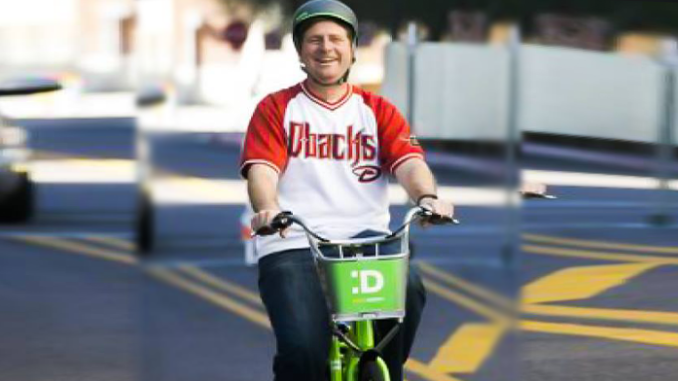
Last year it was bright green and yellow bikes. This year it’s powered scooters.
Either way, the real story is that change is coming, no one has the faintest clue what the future of transportation looks like, and trains are stupid. That last part, of course, is my own idea and is a bit unfair, actually.
Trains aren’t in and of themselves guaranteed to be stupid. It’s what liberal “urbanists” here and elsewhere are planning to do with them that’s dumb; namely, building more of them.
Of course, since “urbanist” appears to be just another iteration of the left’s desperate attempts to re-brand socialism, stupidity is absolutely what people should expect. Because despite what the left likes to claim, they are the farthest thing from the Party of Progress imaginable.
Think about it. What does real progress look like? Does it look like reverting to farming methods from the pre-industrial era? Because despite the fact that modern, “non-organic” farming uses far less land and water to produce far larger crops than “organic” farming, the left is doing everything they can to drag farmers back into the 19th Century.
Now, having had success at ensuring that farms will produce far less food with a far greater environmental footprint, these self-proclaimed “urbanists” want to do the same thing to public transportation: take it back to the era before the Model T.
Which is an incredibly stupid thing to try to do. First, because ole Henry Ford settled this argument a long, long time ago. Second, because for the first time since the invention of mass-produced automobiles, we are on the verge of a true revolution in transportation that can only be stopped by government interference.
The bikes and scooters are just the start: a tiny ripple heralding a coming tsunami which will have the power to entirely reshape our planet, a tsunami powered by Artificial Intelligence (AI). AI is already changing everything about the world we know, most of us just don’t know it yet, and likely nobody at all truly understands just how much change AI will bring.
But the early indicators are mind-bending, breath-taking. AI is designing car chassis that are lighter, stronger – better – than anything humans have created. They’re also almost totally alien in design. The same thing with planes. And we’ve all seen the stories about self-driving cars. Here in Arizona, you’ve probably shared the road with one.
So what does the future of transportation look like? Probably every bit as alien as the vehicles that will define it. Some 20 to 30% of the volume of a modern car is equipment to allow the driver to interface with the vehicle (think: steering wheel, pedals, etc). Another 20-30% is wasted space most of the time (trunk, glove box, etc.).
What does a car look like if it doesn’t need those things, or at least most do not? How big does it have to be? Physical changes are only a part of the question. What about ownership? Does everyone still need to own a car, or will they operate more along the lines of rideshare services?
Estimates are that a fleet of primarily self-driving vehicles could reduce traffic congestion by as much as 70%, with attendant reductions in commuting time. And the AI revolution isn’t going to stop with cars. Buses are an early target for self-driving technology, and so are their routes – two changes that could massively alter the cost/benefit analysis that determines where and how frequently cities are able to run bus routes.
Alien, though, doesn’t mean it’s going to be totally unpredictable. There is one area of behavior where humans are thoroughly, completely reliable: self-interest. Husbands and wives don’t drive, by themselves, to work each day for the privilege of paying two car loans. They do it because their self-interest and the convenience of a personal vehicle irresistibly collide. Given any choice at all, people opt for personal convenience over all else.
An Uber representative once told me that for the amount we are spending on light rail ($30 billion), Uber could provide every single trip for every single person in Phoenix, wherever they want to go, for the next 30 years. That may have been an exaggeration, but not much of one, and that’s with current technology. Throw in automated driving and routing technology, power it with AI, and he might have been underestimating Uber’s advantage over light rail.
That’s why building light rail right now isn’t merely wasteful, it’s downright stupid. It takes at least 30 years of use, at ridership levels much higher than we actually have here on our existing light rail lines, to justify the investment in a fixed-line light rail transportation. There isn’t one single person anywhere in the world who can tell you what public transportation looks like 30 years from now.
One thing, however, is certain: buying rail now is roughly akin to purchasing a vast new network of stables, coaches, and horses in 1908. Going backwards at a time when private companies from across the globe are in a pitched battle for the future of transportation isn’t horse-sense. It emanates from another part of the horse.
